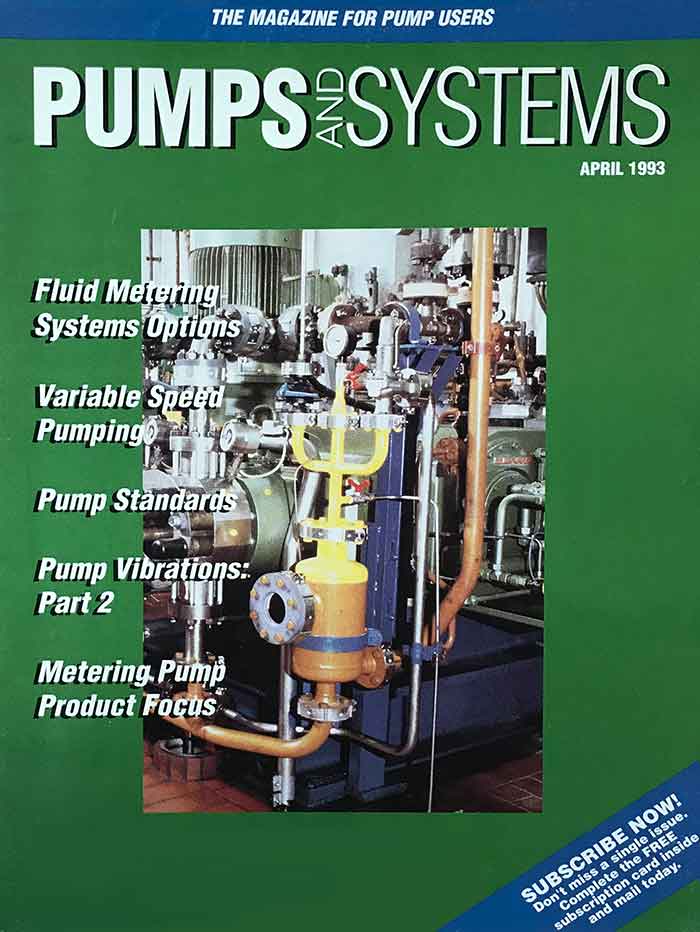Choose the best metering technology for your applications.
Milton Roy
05/10/2018

Editor’s note: Continuing our celebration of our 25th anniversary, Pumps & Systems is re-publishing the following article from 1993.
The metering pump is a positive displacement chemical dosing device with the ability to vary capacity as process conditions require. The pump is designed to provide a very precise and repeatable flow rate within a specified capacity range. Capacity can be adjusted manually or automatically via an external control signal. It features high accuracy and linearity across its entire turndown range, typically 10:1.
The most common types of pumps rely on a mechanically driven, reciprocating plunger (smaller pumps may use a solenoid drive), which either acts directly on the process fluid, as in a packed plunger design, or acts on a hydraulic fluid, which actuates a diagram.
The diaphragm, in turn, displaces the process chemical in the liquid end chamber by a fixed amount per stroke. The result is a metered dose of chemical virtually unaffected by pressure changes.
Diaphragm pumps are virtually leak free and, as environmental regulations become more stringent, are increasingly replacing packed plunger designs. Capacity is varied either by adjusting stroke length, which changes the amount of fluid pumped per stroke, or by changing stroking speed. This changes the quantity of fluid doses delivered in a given period of time. Stroke length can be varied by manual micrometer knob or by pneumatic actuator. Stroking speed is adjusted using a variable speed motor.

